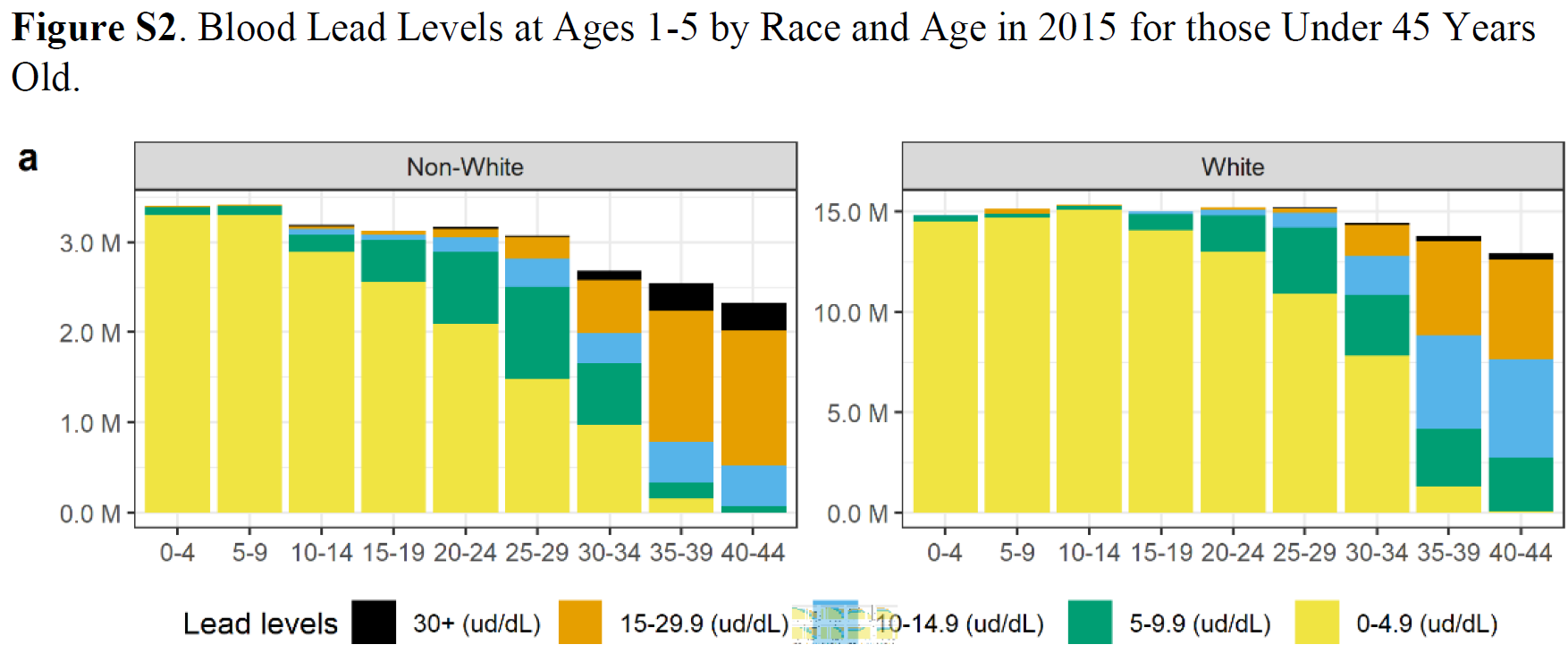More than Half of Americans Had Toxic Lead Exposures
/The startling data comes from a new study in Proceedings of the National Academy of Sciences.
I have always been darkly fascinated by lead. As a nephrologist, I would occasionally come across a case of what we still call saturnine gout – gout due to lead toxicity – in the occasional moonshiner, a result of distilling alcohol in old, lead-lined car radiators.
It was the Romans, of course, who associated lead with Saturn – those with too much lead exposure were thought to exhibit the characteristics of the God - dark, somber, slow.
In fact, in contrast to the popular conception that the Romans poisoned their empire to death through lead piping and plates, it seems fairly clear that they were aware of its potential toxicity. Vitruvius argued for the use of terracotta pipes, instead of lead ones, in the first century BC.
Of course, sometimes it seems that we haven’t learned much since then, as the Flint water crisis reminds us.
And now this paper, appearing in the Proceedings of the National Academy of Sciences, suggests that the impact of lead exposure will continue long – long into the future.
In fact, this paper suggests that the use of leaded gasoline from the late 60s to the early 80s may have been one of the greatest public health tragedies in any of our lifetimes.
Lead harms the developing brain.
This is not a controversial statement. Many studies, in both animals and humans, have demonstrated lead’s effect on neuronal function. Lead acts like a divalent cation – like magnesium or calcium. With transporters on virtually every cell of the body, lead can easily pass through the blood brain barrier.
OK, how much lead has the US population been exposed to? Let’s walk through the startling data.
If you want to estimate childhood lead exposure of everyone alive today, you are going to run into a problem. The CDC has only been systematically measuring blood levels in a representative cross-section of the population since 1976. In the red line here, you can see the percent of kids with blood levels below 5 mcg/dL – the current toxicity threshold.
In the late 70s, there were virtually no children with lead levels below 5 mcg/dL. Why?
Well, the answer is in this line – showing the leaded gasoline consumption over time. More leaded gasoline, less kids with low lead levels.
But there’s a problem. Prior to 1976, there is no data on lead exposure in children.
The authors get around this by extrapolating the observed data back in time. They can do this for one simple reason – far and away the largest environmental factor that predicts lead levels is the use of leaded gasoline. And, thanks to the Bureau of Mines Mineral Yearbook, we have great data on how much leaded gasoline was used in this country from 1933 on.
The authors can thus use directly measured lead levels and leaded gasoline exposures after 1976 to back-calculate lead levels based on leaded gasoline exposure prior to 1976. You see that in the dotted line here.
The results should give all of us pause.
From 1960 to 1980, virtually every single child in the US would have had lead levels in their blood that, today, we consider toxic.
The authors then used demographic and population data to see how many adults today were exposed to high levels of lead as children.
The findings are clear – among those currently aged 40 to 50 – there is a tremendous burden of childhood lead exposure. Virtually no one in that age bracket had lead levels less than 5 in childhood.
Taken altogether, 53.5% of Americans alive in 2015 had lead levels we would consider toxic when they were young.
And though we no longer use leaded gasoline, the impact will be felt for some time. The authors estimate that by 2030, 43% of the population will be affected by high childhood blood lead levels.
What is the impact of all of this, often subtle, neurotoxicity?
The authors calculate an average IQ loss of 2.6 IQ points per person in the US – more than 800 million IQ points collectively. Of course, those born in the peak of leaded gasoline consumption are hit harder- about 6 IQ points per person born between 1966 and 1970. That IQ loss leads to a decrease in lifetime productivity – totaling 165 to 319 billion dollars lost.
It behooves me to point out that, like so many public health issues, the burden of lead exposure is not uniformly distributed. The authors note that non-white individuals are substantially more likely to have high childhood lead exposure than their white counterparts.
In short, if you are watching this it is more likely than not that you were exposed to lead levels as a child that were high enough to have an impact on your intelligence. Unfortunately, there is not much that can be done about it now. We can do our best to protect the children of today from lead toxicity, which remains an issue particularly in the inner cities. Really, though, this study is not a call for action, but a reminder that the impact of the environment – on how we organize industry and society - on our health may not be fully understood for decades. What choices are we making today that we may not appreciate until the next century? And where is Vitruvius when you need him?
A version of this commentary first appeared on Medscape.com.






